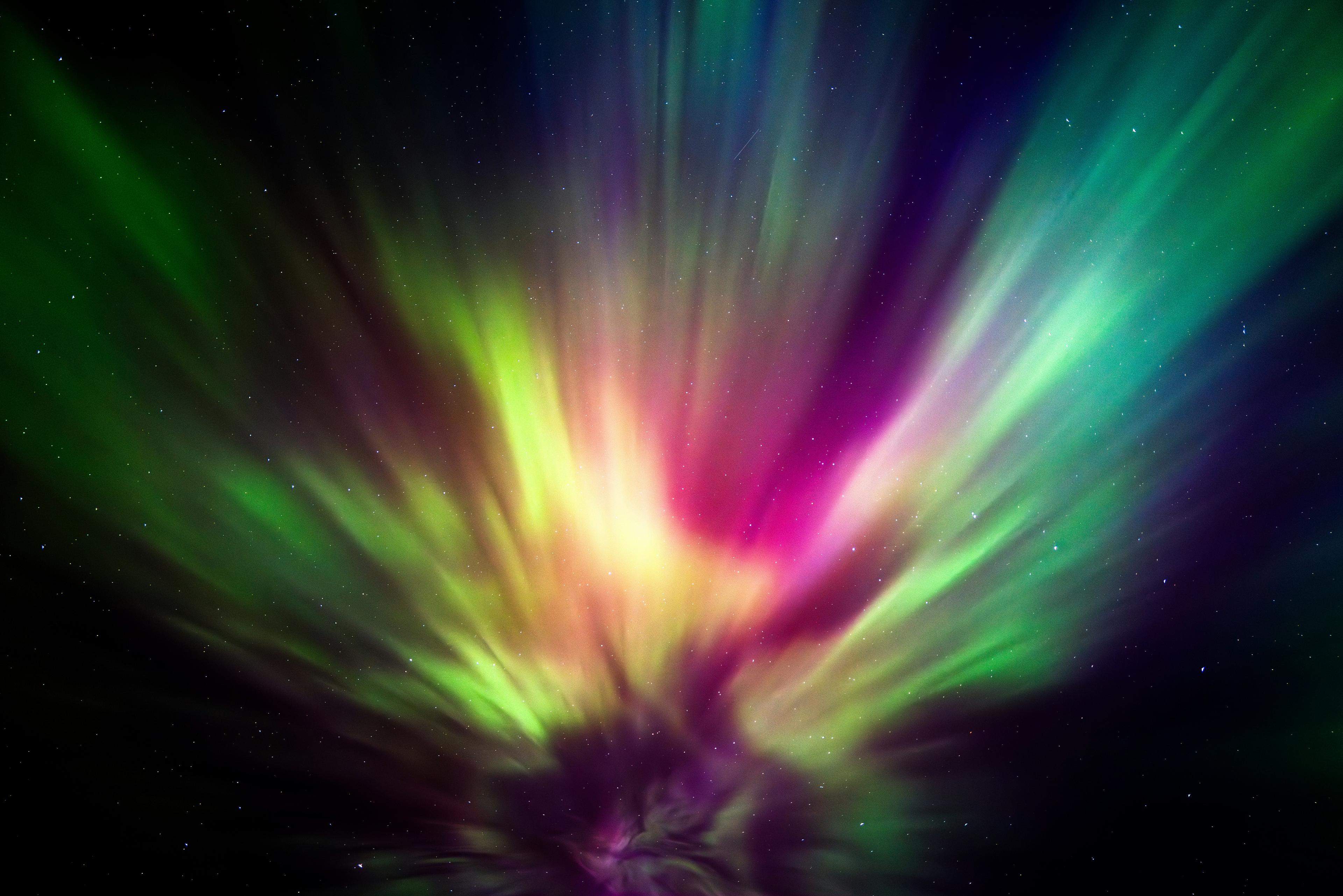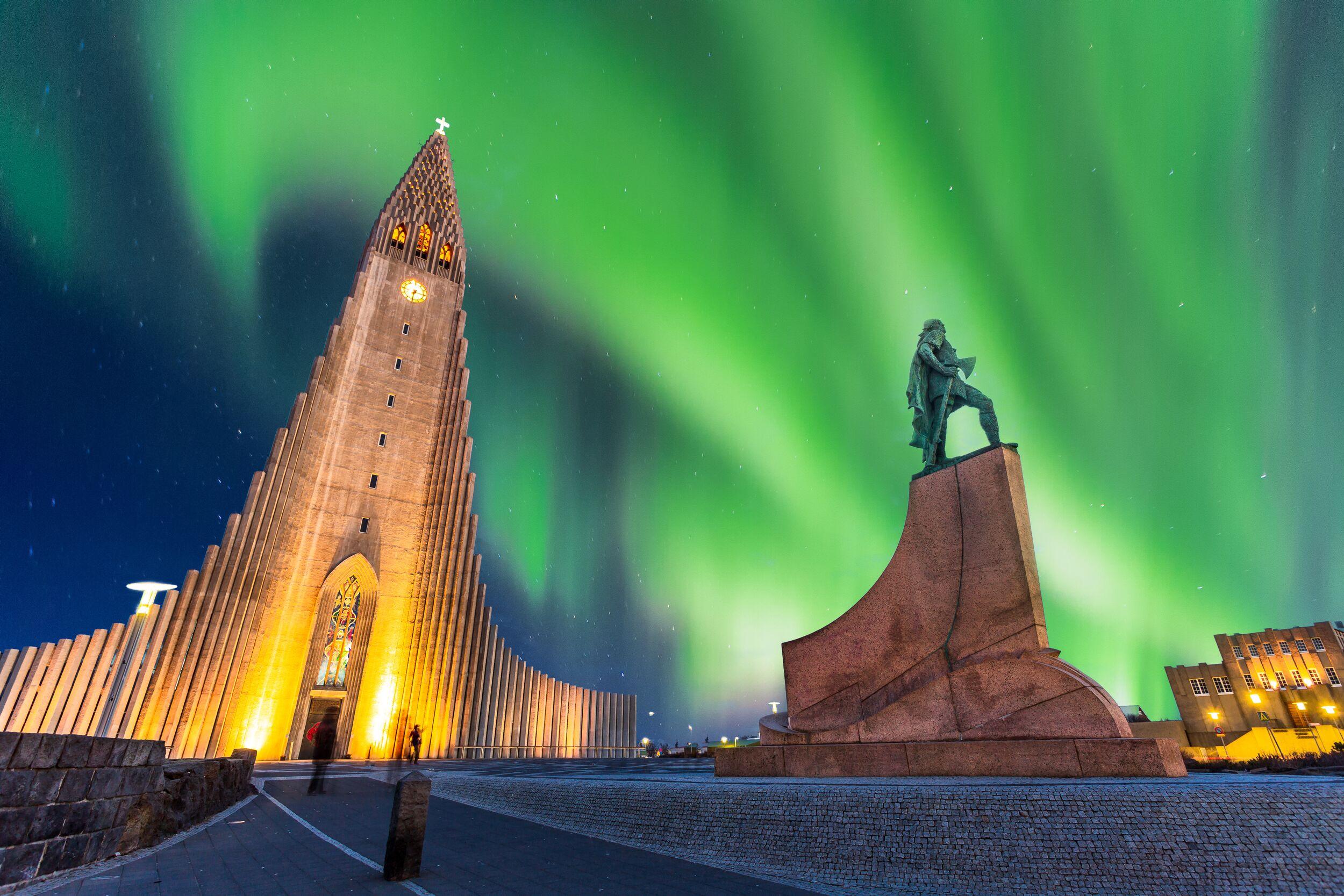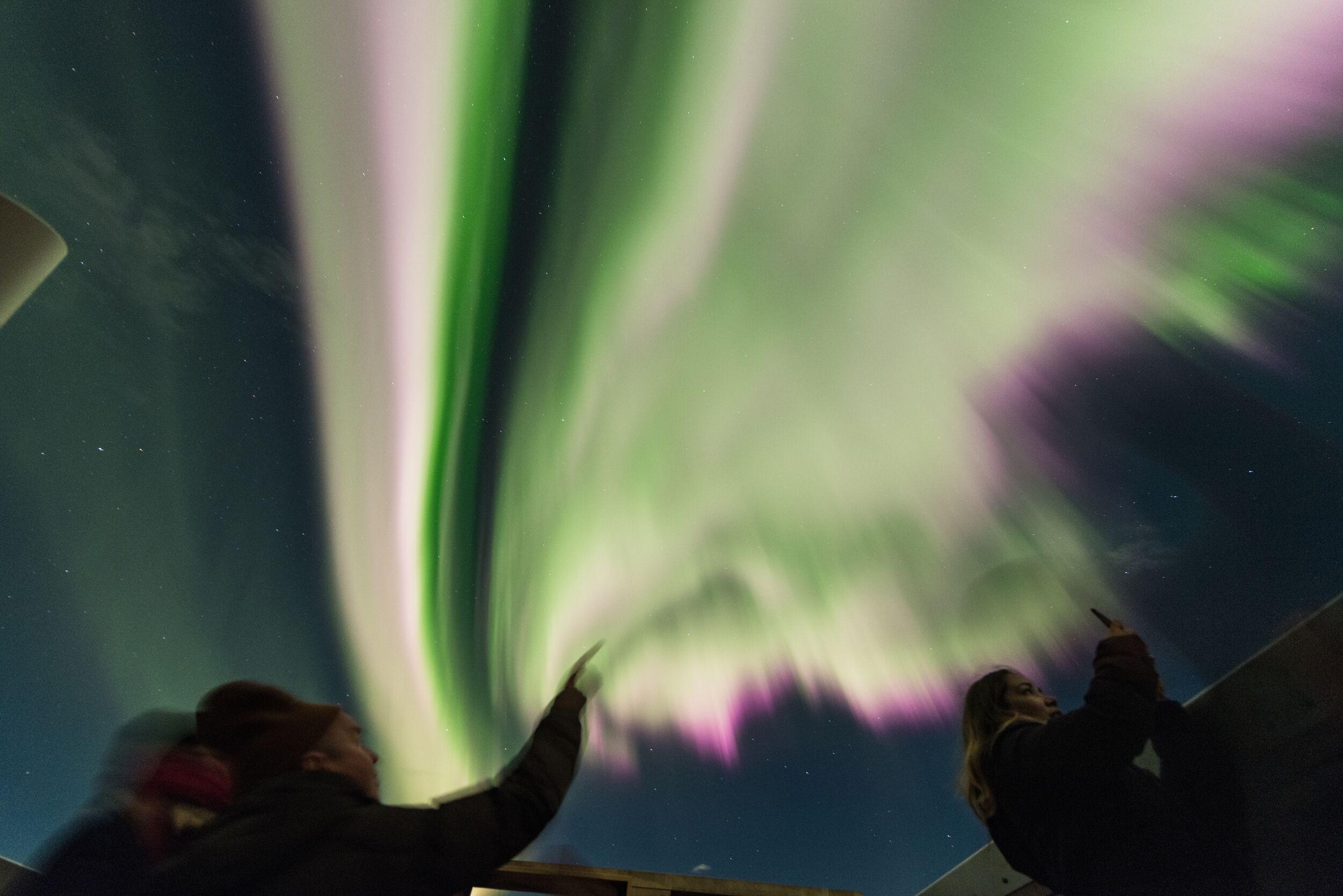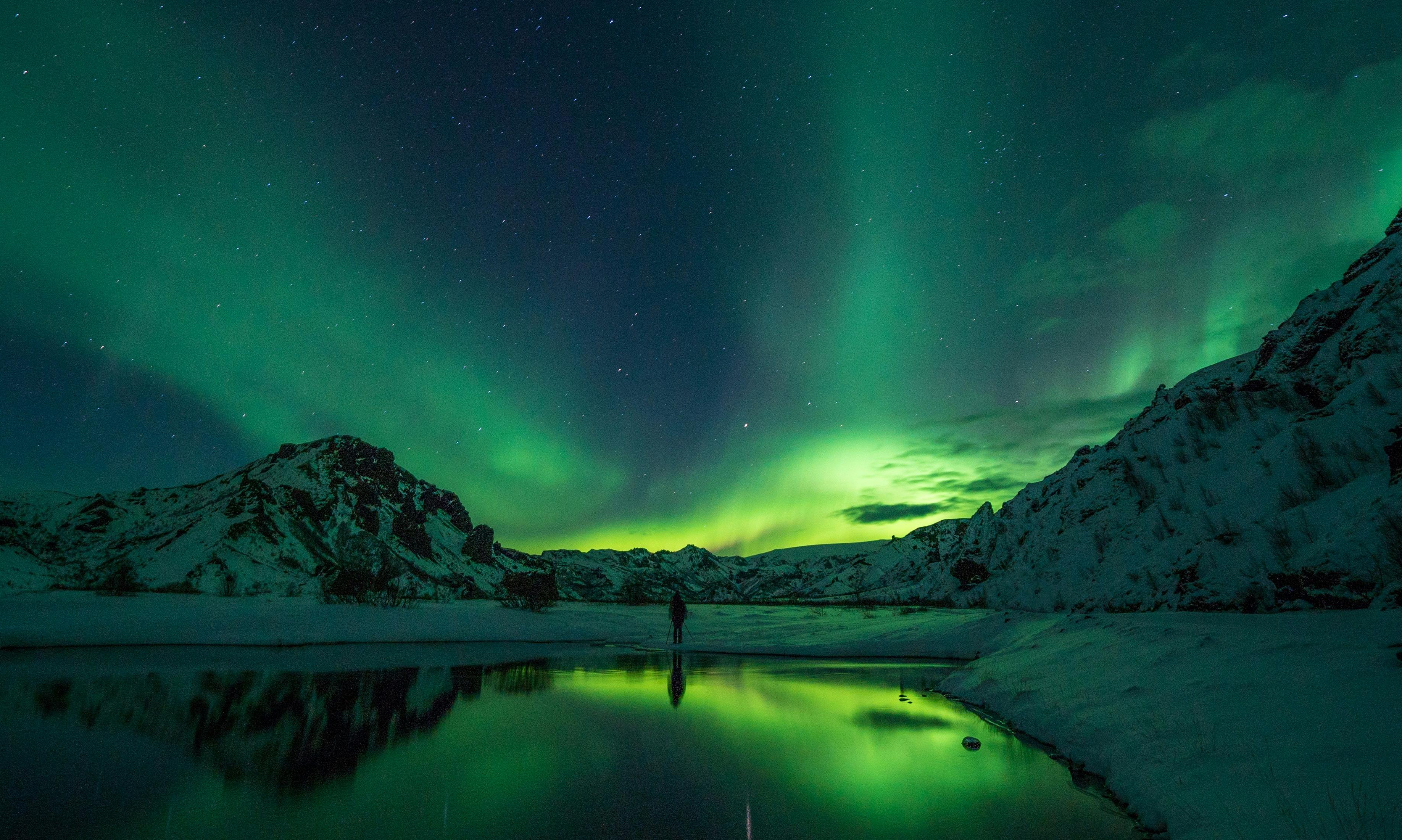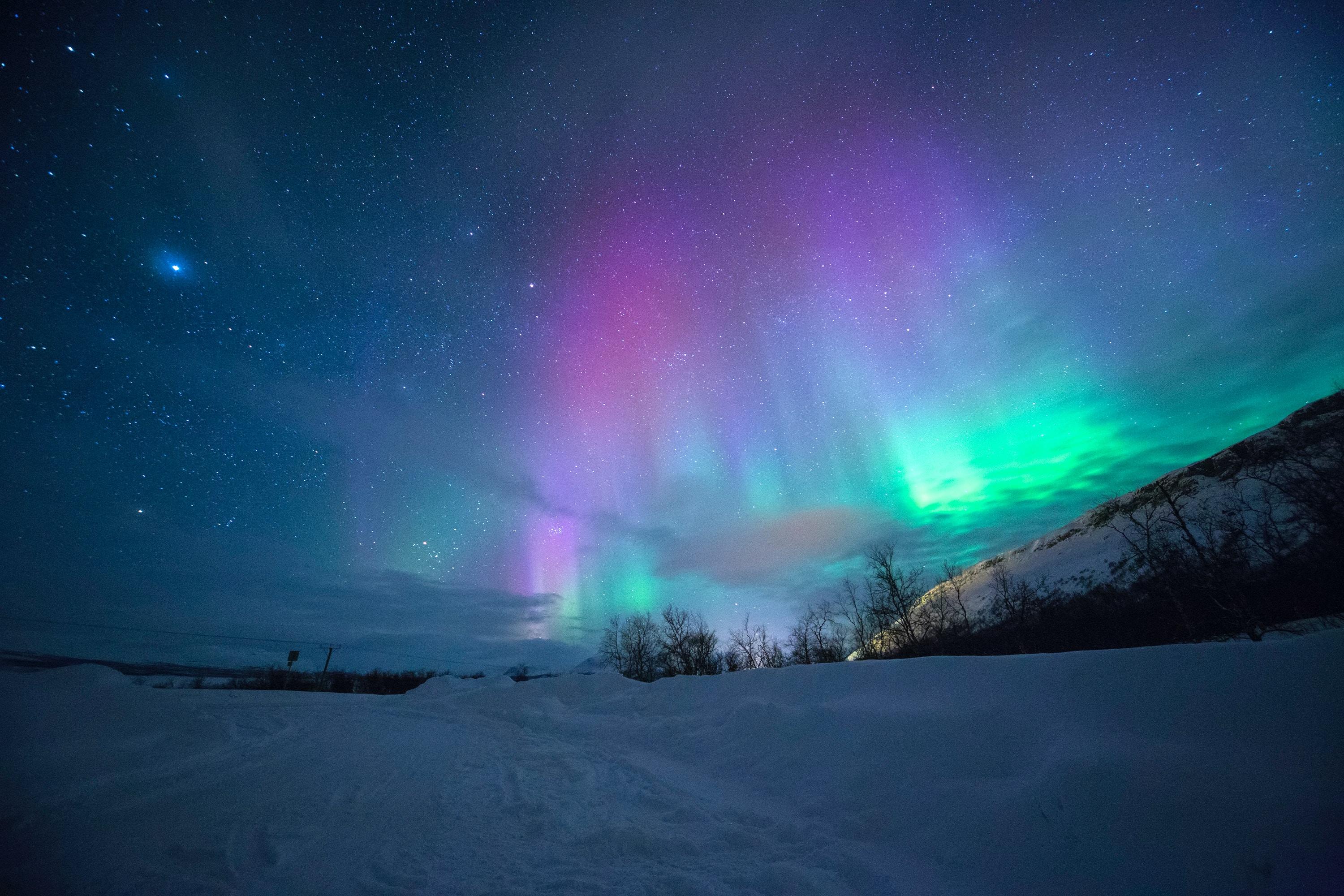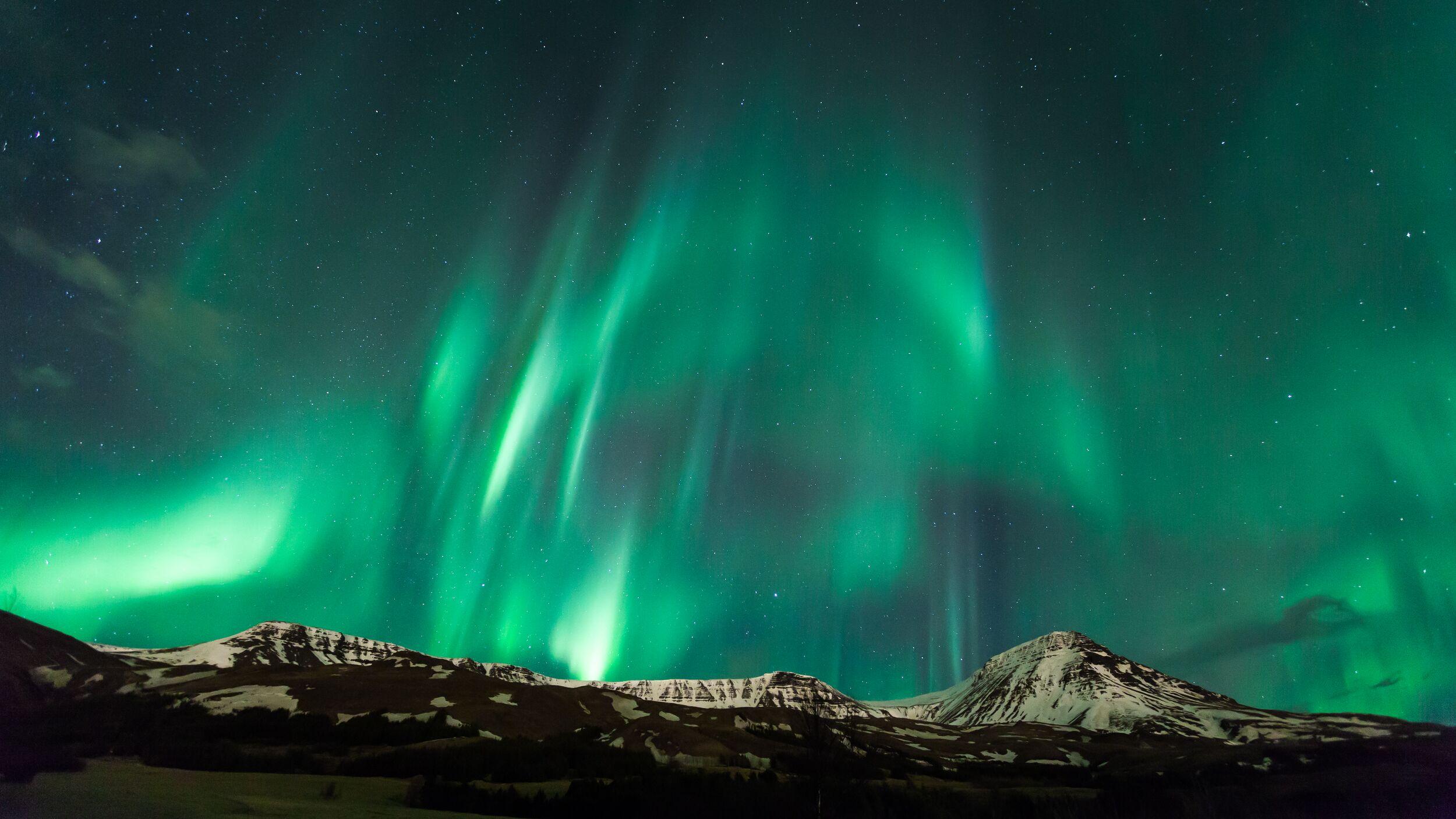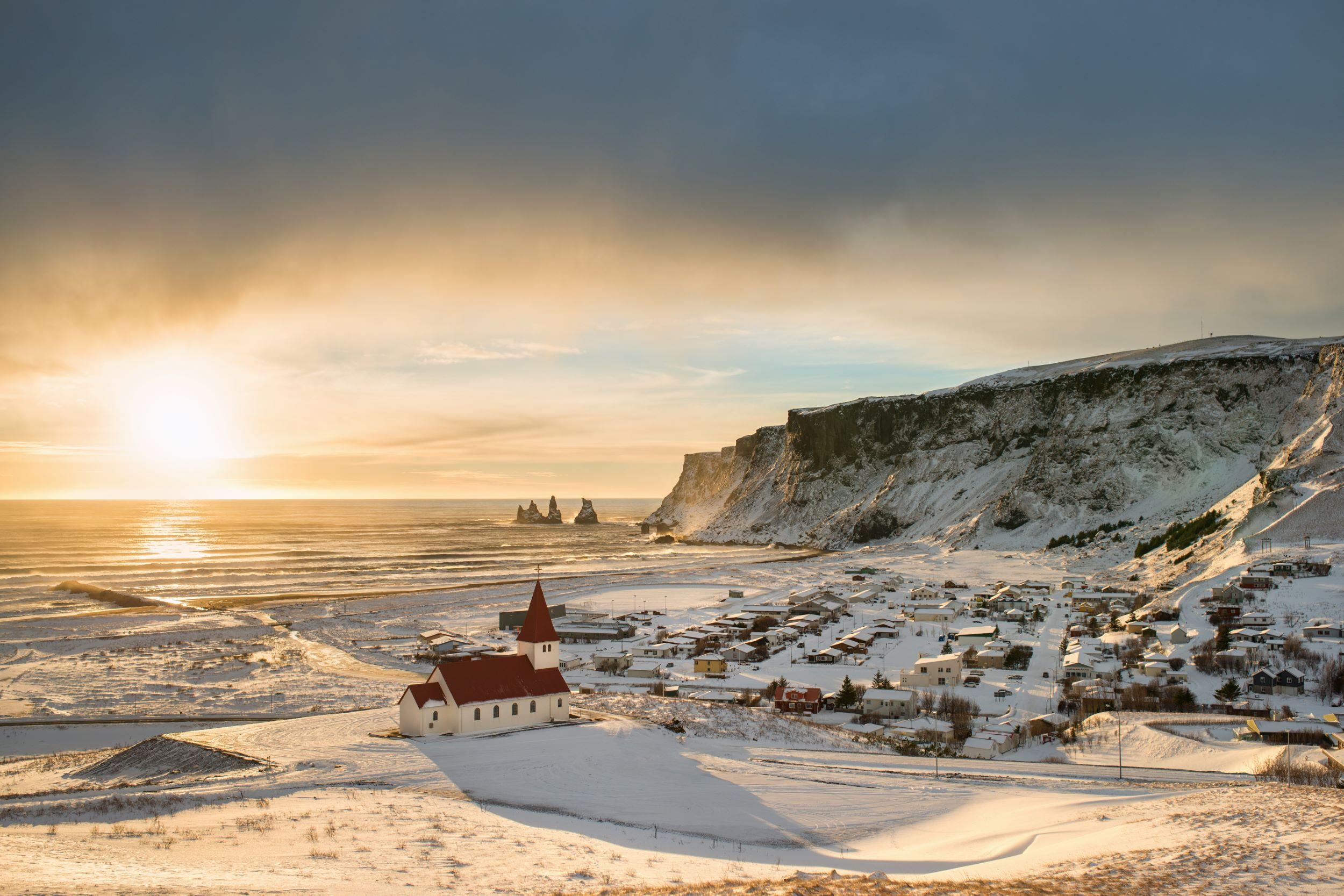The Solar Peak: Why 2024/25 is the Best Time to See the Northern Lights in Iceland
Table of Contents
- 1The Spellbinding Aurora Borealis
- 2Learning About Sunspots and the Solar Cycle
- 3The Solar Cycle and the Solar Maximum
- 4Sunspots and the Aurora
- 5Should You Still Come on a Northern Lights Hunt in Iceland if You’ve Already Seen the Aurora?
- 6Iceland Travel 2025
- 7Essential Aurora Borealis Viewing Tips
- 8Book Your Tour With Us for Peace of Mind
- 9Questions and Answers about Northern Lights in Iceland
The Northern Lights are one of nature’s most bewitching spectacles. Ethereal and mercurial, the aurora borealis has intrigued people for centuries. Their myths and legends existed long before anyone could offer a scientific rationale for what was taking place. Even as our understanding has grown, their magic is undimmed, and from autumn to spring, this celestial wonder attracts countless tourists to Iceland in the hope of a sighting.
What does the expected solar maximum of 2024/25 mean for travellers to Iceland? Good news: the Northern Lights have already started showing up this season, so it bodes very well if scientists are expecting the solar maximum could take place in 2024/25 or even beyond. This could potentially be the best time to see the Northern Lights for a while, though of course there have still been glorious displays around the time of the solar minimum.
In this article we’ll take a look at the solar cycle and explore how the solar maximum of 2024/25 could influence your Iceland travel plans.
Never miss a celestial event!
Subscribe now for exclusive tips and offers!
The Spellbinding Aurora Borealis
Iceland’s northerly location close to the Arctic Circle means that the aurora borealis is a frequent visitor to its skies. Yet unlike fireworks displays and drone shows, its appearance can never be guaranteed, and it’s this unpredictability that helps account for its irresistible appeal. The anticipation that builds as you begin your Northern Lights hunt is matched only by the thrill of witnessing this temperamental phenomenon.
Last season was an especially memorable one for the Northern Lights and this season looks like it could be even better. In May 2024, the strongest geomagnetic storm since 2003 created a spectacular display much further south than usual across mainland Europe and North America. The skies turned pink and purple and green in a series of arcs, ribbons and curtains of colourful light that danced across the heavens.
Aurora forecasts have a habit of fizzling out in southerly locations, but this one proved to be different. Many people were caught unprepared, grabbing their mobile phones and dashing out into back gardens to snatch a hurried photograph to compare with friends the following day. It was better than nothing, you could say, but in some respects, it could possibly be seen as a teaser for what’s to come.
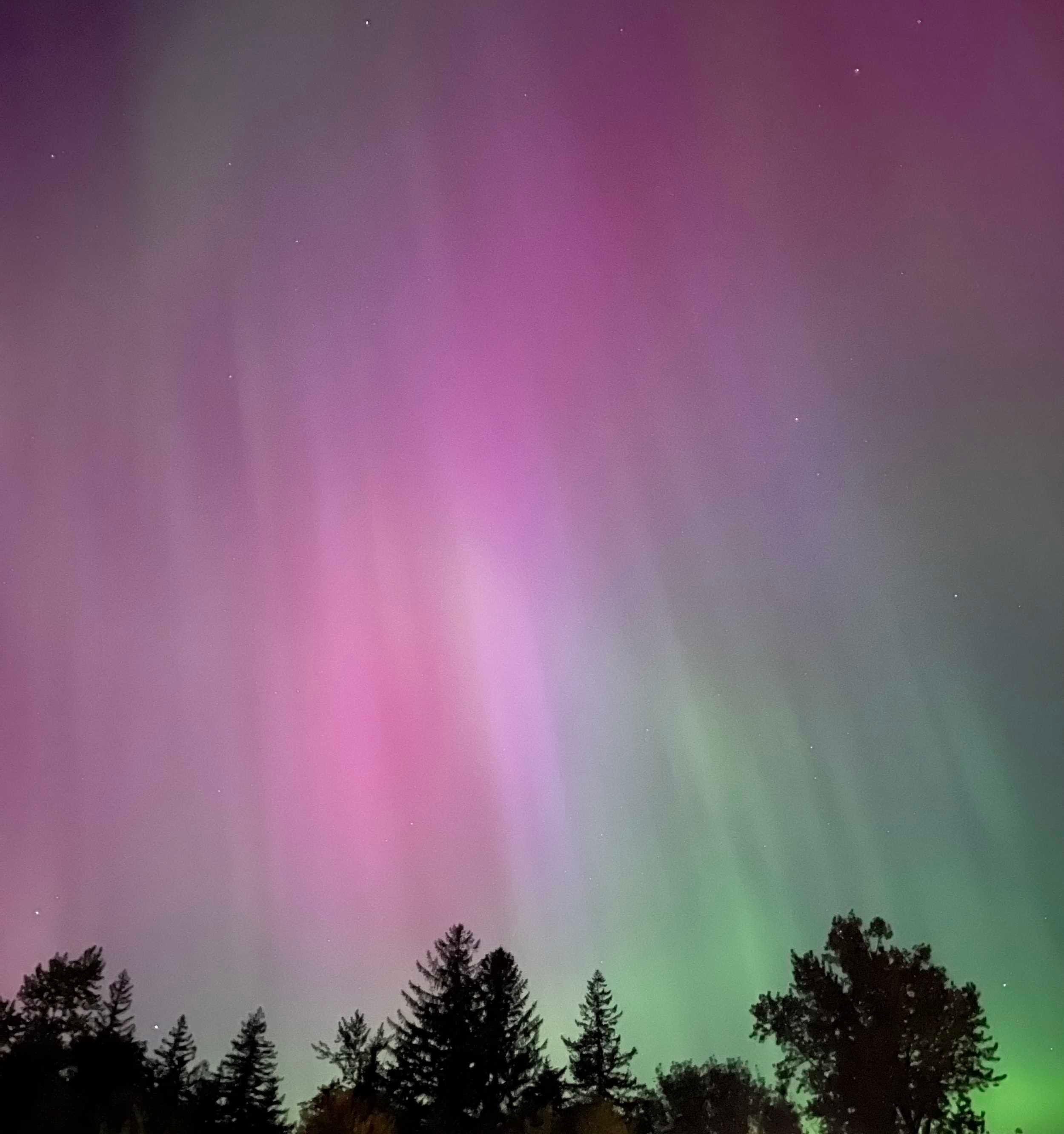
Aurora Borealis in Washington
View of aurora borealis pictured from Snoqualmie, Washington, during a solar storm on May 10, 2024. Photo: Shantham11 on Wikimedia
Learning About Sunspots and the Solar Cycle
To understand more about the Northern Lights we need to understand the solar cycle. Solar activity doesn’t happen at a uniform pace. Instead it waxes and wanes, broadly following an approximately 11 year cycle. During this period, the intensity and frequency of sunspots on the sun’s surface changes. These sunspots are areas that look dark on the sun’s surface and are cooler than their surroundings.
A German amateur astronomer called Samuel Schwabe was the first to make significant strides in our formal understanding of sunspot cycles. He spent a lot of time in the first half of the 19th century observing and drawing sunspots. By 1843, he tentatively suggested there might be some kind of cycle, estimating that sunspot activity seemed to follow a ten year pattern.
Inspired by Schwabe’s findings, a Swiss astronomer named Johann Wolf realised that to have a more accurate idea of such a pattern, he’d need more data. He set about collating all the sunspot data he could find, some recorded by Galileo in the 17th century.
The earliest records were too patchy to be conclusive, but Wolf was confident that the numbers from 1755 supported a solar cycle theory. The period from 1755 to 1766 is therefore referred to as Solar Cycle 1 and we’re currently partway through Solar Cycle 25.

Sunspots cause solar flares
Sunspots are regions of intense magnetic activity on the Sun that lead to solar flares and coronal mass ejections, which release charged particles into space. When these particles interact with Earth's magnetic field, they enhance the Northern Lights, making them more vibrant and frequent.
The Solar Cycle and the Solar Maximum
Solar Cycle 25 has so far been much more active than scientists expected. The forecast issued in 2019 by the USA’s National Oceanic and Atmospheric Administration (NOAA), produced in conjunction with NASA, predicted a weak cycle. But such forecasting is in its infancy and in this case, looking at the evidence to date, they’ve got it spectacularly wrong.
A recent article published by Scientific American in 2023 reported that sunspot activity has been way higher than anyone anticipated. In January of that year, for instance, astronomers observed 143 sunspots which was far in excess of the 63 that had been estimated. Solar flares have also been more intense during Solar Cycle 25.
The next solar maximum is forecast to occur sometime between autumn 2024 and 2026. Unfortunately, scientists can’t yet pinpoint the exact time when this solar maximum happens with any precision. Currently, they can only advise us that the solar maximum has passed, once they look back at months of data and carry out their analysis of the figures.
The next solar maximum is forecast to occur sometime between autumn 2024 and 2026.
Sunspots and the Aurora
So what have sunspots, solar cycles and solar maximums got to do with the Northern Lights? The solar cycle and auroras are intrinsically linked. Magnetic field lines that occur near sunspots often get tangled and when the do so, there’s an explosion of energy which scientists refer to as a solar flare. A coronal mass ejection (CME) can accompany these solar flares.
When charged particles from a CME reach the earth’s atmosphere, they can trigger auroras. Five such CMEs were ejected in close succession during that May 2024 event. It follows, therefore, that when there are more sunspots, there should be an increased chance of seeing the Northern Lights. As we approach the solar maximum, we could see some more incredible celestial displays.
Stunning 4K Video of Aurora as Seen from the Space Station
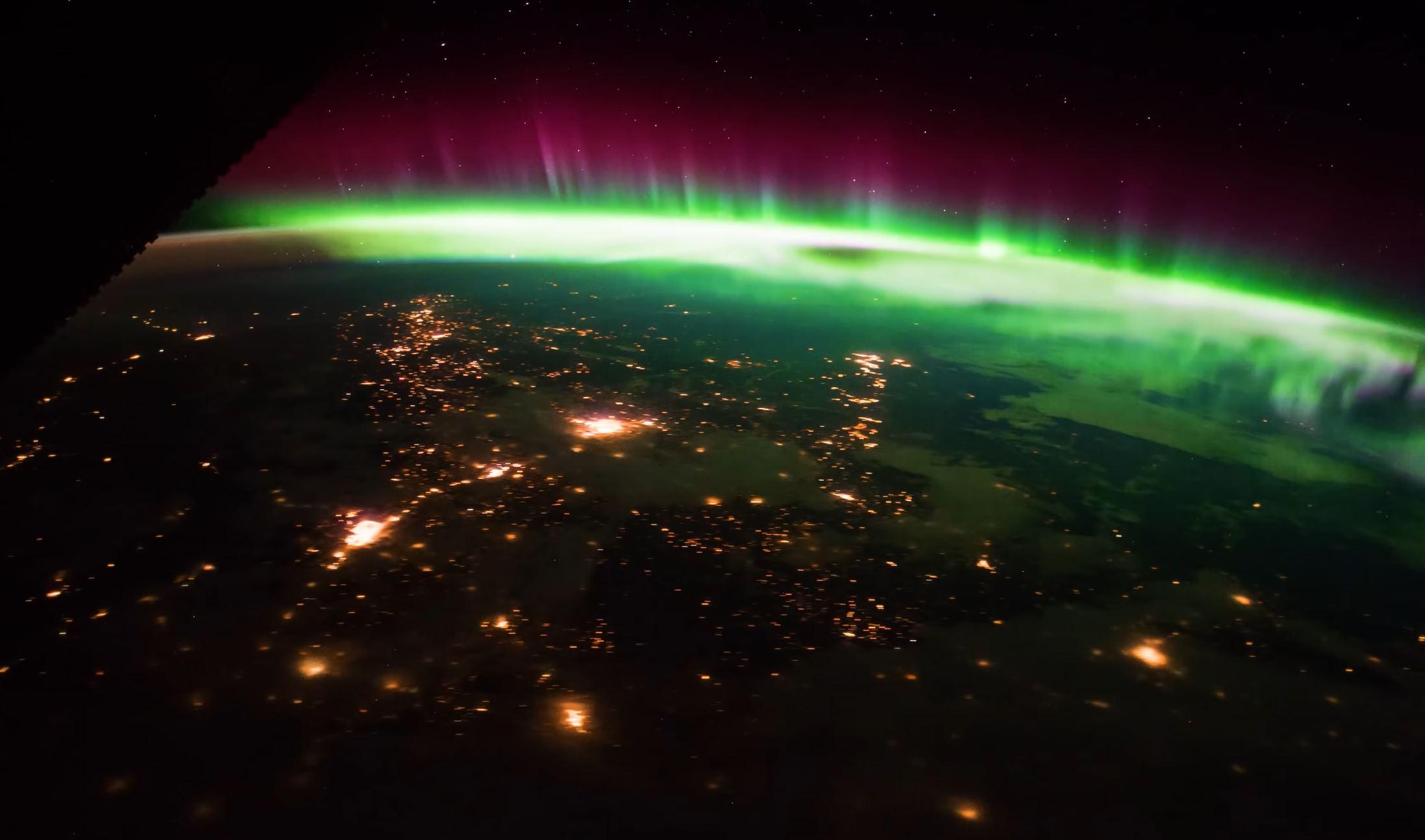
Should You Still Come on a Northern Lights Hunt in Iceland if You’ve Already Seen the Aurora?
If you have seen the Northern Lights nearer to home, you might wonder whether it’s worth trying to see them during an overseas trip. We think so: no two aurora displays are alike. Different colours, varying patterns and the random durations of each show combine to encourage travellers to see them again and again.
There are many advantages to seeing the Northern Lights in Iceland, such as the abundance of dark places far from anywhere impacted by light pollution. If you live in a more densely populated area, it’s hard to be able to get far enough away from towns and cities to be able to escape the distant glow of lights and find somewhere really dark. This washes out the Northern Lights and makes them harder to see.
Not so in Iceland, where the countryside is a short drive from Reykjavik. There’s no shortage of places that make good spots to see the aurora. Our distinctive natural and built landmarks, from waterfalls and icebergs to remote churches and lighthouses mean there’s also a wide variety of interesting foreground subjects to give your photographs the wow factor.
Our Northern Lights tours operate throughout the aurora season, beginning in the latter part of August and running until mid-April. You can opt for small group Northern Lights tours as a standalone or combine them with other excursions such as a visit to the attractions of the Golden Circle.
If you prefer to be independent, rent a car and scope out suitable locations in daylight or stay out in the countryside in a hotel that offers an aurora wakeup call for its guests.
Our unique natural landmarks, ranging from waterfalls and icebergs to secluded churches and lighthouses, offer a diverse array of captivating foreground subjects to elevate your photographs with a wow factor.
Iceland Travel 2025
Statistically, you’ll have the greatest odds of seeing the aurora borealis in places at high latitudes such as Iceland, and also at the autumn or spring equinoxes, making the prospects for this September and next March doubly exciting. Coming in the shoulder seasons means there’s more daylight which will help you accomplish your other sightseeing goals; the weather is often better than in mid-winter too.
One thing that’s really important when you’re planning a trip based around the hope of seeing the Northern Lights is appreciating that you might not see them at all. This, though disappointing, is another reason why coming to Iceland is a great idea. There’s a wealth of sightseeing opportunities both indoors and outdoors, within Reykjavik and beyond the city limits.
The country’s rugged and dramatic terrain, replete with waterfalls, glaciers, iceberg-strewn black sand beaches, volcanoes and an array of geothermal landforms, means that nature is going to deliver at ground level even if the heavens aren’t cooperating. At Perlan, reached by Reykjavik’s Hop On, Hop Off sightseeing bus, the Áróra show uses 8K projection and surround sound showcases breathtakingly cinematic footage of the Northern Lights within a 150-seat planetarium.
Essential Aurora Borealis Viewing Tips
We Icelanders are used to seeing the Northern Lights and have plenty of advice to help you ensure your aurora quest is successful. Here are a few tips to consider:
Avoid a full moon if you can
The full moon floods the night sky with light, which is the opposite of the optimum conditions you’re looking for on your aurora hunt. If you can, book your Northern Lights tour for when there’s a new moon as this will minimise celestial light pollution. But rest assured that it is still possible to view the Northern Lights when the moon’s out – even in urban areas – if they’re strong enough.
Expect to have to wait around
Most Northern Lights tours involve standing around in the cold for a while, as the aurora has a habit of showing up – sometimes fleetingly, and then taking a break.
Our experienced guides study the cloud cover forecast and Kp Index predictions so that you’ll head for a location with a good chance of an appearance, but even so, the Northern Lights don’t show up in a particular place at a particular time. It’s a bit more hit and miss than that, so you’ll need to be patient
Dress warmly
Make sure you layer up your clothing so that you don’t feel too cold when you’re not on the move. You’ll feel the benefit of thermal base layers, woollen jumpers – such as our traditional lopapeysa – and of course a suitable coat.
Thick gloves, a warm hat and a scarf or snood that can protect your face are all recommended. Boots with a thick tread so that the cold from the ground can’t permeate up into your feet are also essential. Slip a pack of hand warmers into your pocket too.
Know how your camera works
As you watch the aurora borealis dance across the heavens, it’s natural to want to record the moment to show your friends and family. But the last thing you want is to waste the opportunity by fiddling with your camera’s settings in a panic, missing the show in the process.
Figure out the settings you’re likely to need and practice some low-light photography beforehand while the pressure’s off, and you’re more likely to get it right on the night.
Manage your expectations
The Northern Lights appear a lot more faintly to the naked eye – sometimes they will be grey, rather than the green or purple you’ve been expecting. Hang around, though, as the initial activity often explodes into something far more intense as the evening progresses. Although, to see the colours really pop, you might be better off looking through your camera or smartphone too.
Book Your Tour With Us for Peace of Mind
We operate this tour dependent on a number of factors, namely solar activity, cloud cover and weather conditions. If you are planning your trip to Iceland in the hope of seeing the Northern Lights, then come for as many days as you (and your budget) can spare. If you’re hoping to join one of our aurora tours, we’d recommend you book it for the beginning of your holiday.
Unfortunately, sometimes aurora tours have to be cancelled if we’re certain we have no chance of seeing the Northern Lights. If that’s the case, however, we make every effort to reschedule it for a later date. Rebooking is a seamless process and is free of charge. If it’s not possible to find an alternative date that works for you, we refund your money promptly, so you really do have nothing to lose.
If the clouds roll in during a tour and it’s a bust, all is not lost. We offer another chance if the tour is unsuccessful. For those who don’t see any auroras at all during their tour, you will be issued another ticket for a tour, free of charge. It can be used up to two years after the original tour date. We know seeing the Northern Lights is something really special and customer satisfaction is a top priority.
Though it’s important to have realistic expectations, with careful planning, plenty of patience and a bit of luck, you can improve your chances of viewing the Northern Lights in Iceland as we approach the period of the solar maximum.
Let us be your host as we go after this heavenly delight together!
Select Your Northern Lights Tour
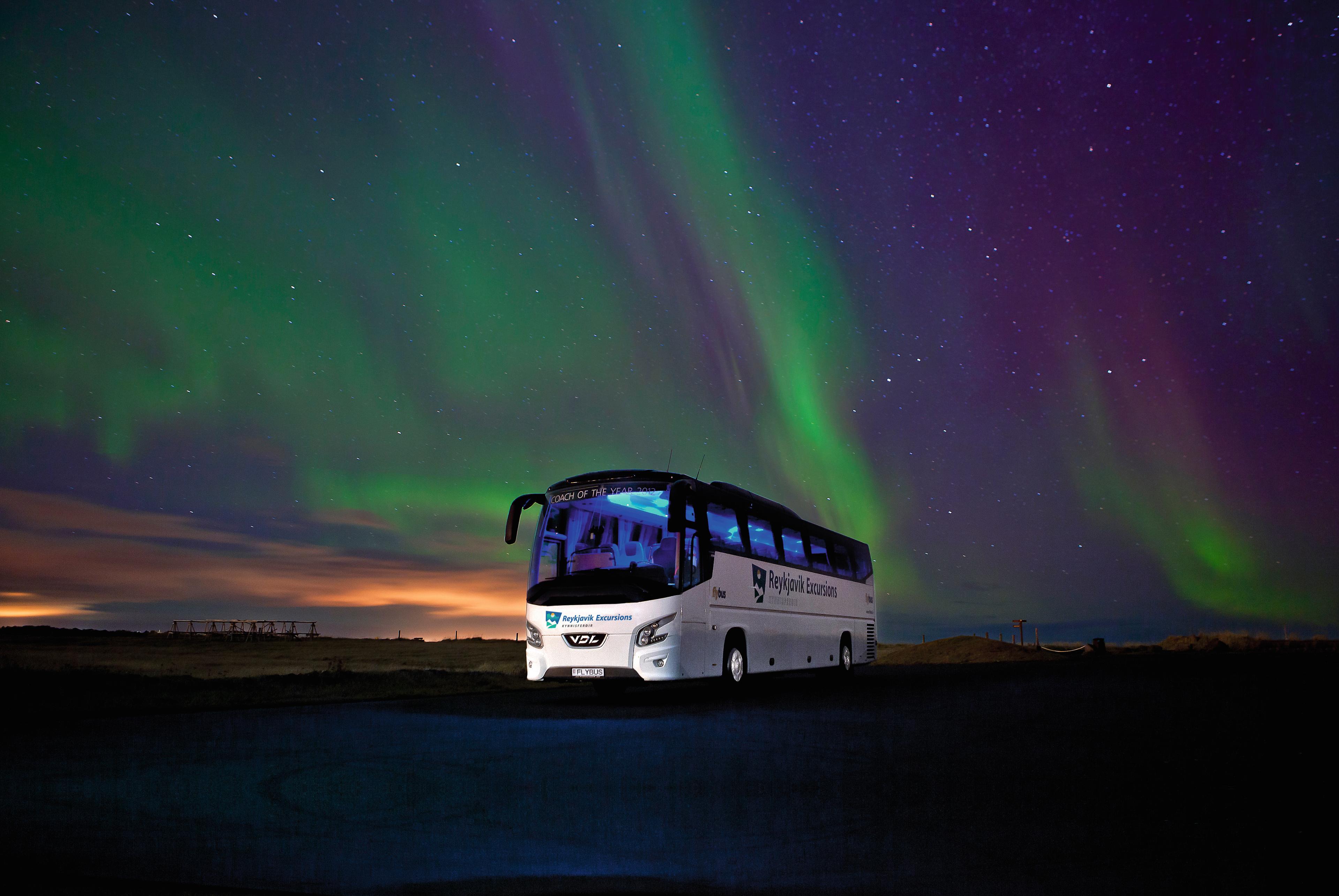
Northern Lights Tour
See the majestic Northern Lights dancing across the sky. If the skies are shy, try again free of charge as many times as you need until you see them! Learn about the phenomenon by visiting the Aurora Centre - Northern Lights Exhibition in Reykjavík; admission is included in this tour!
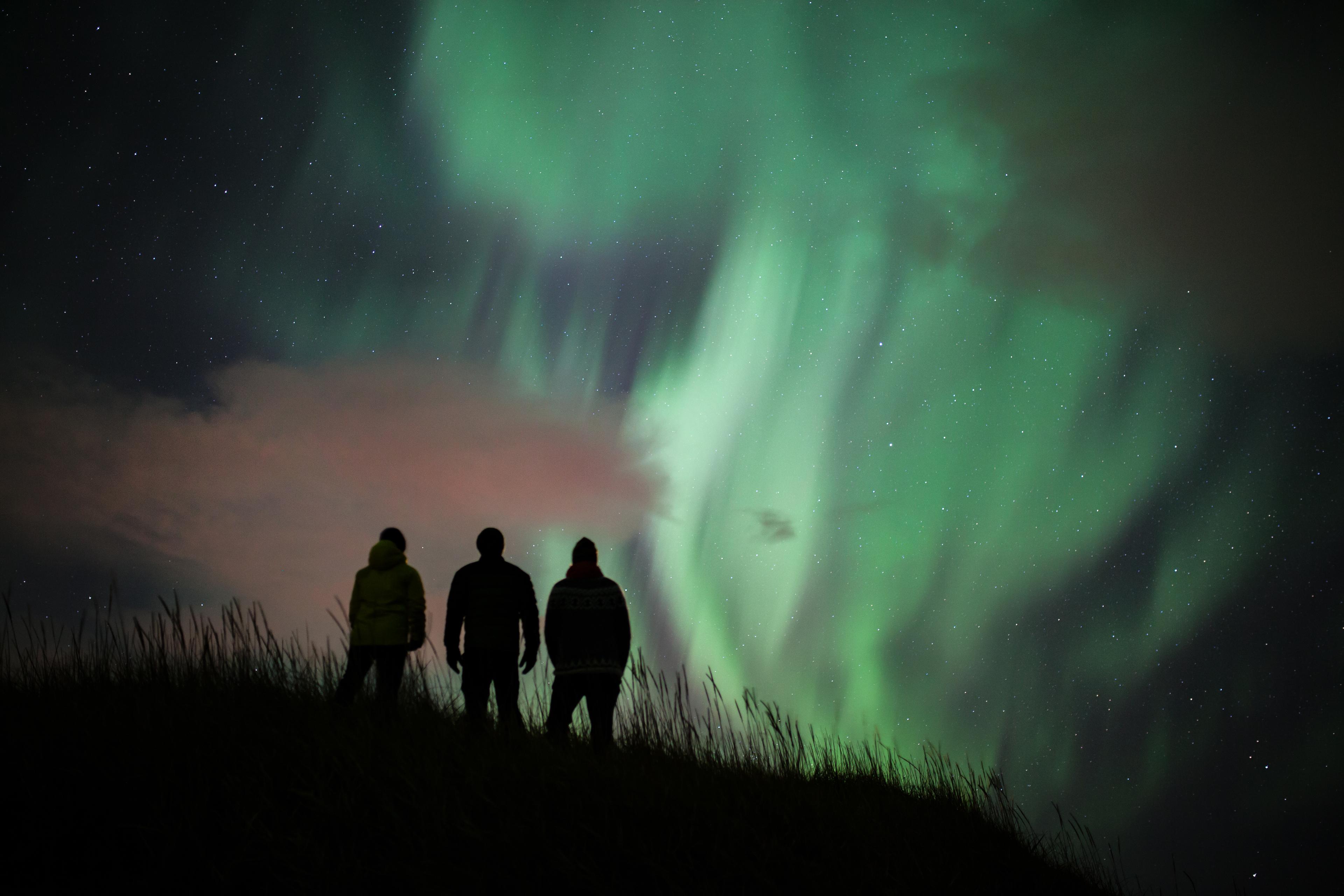
Northern Lights - Small Group Tour
Catch the stunning Northern Lights in the sky, and if they're shy, rebook for free until they show. Included admission to the Aurora Centre's Northern Lights Exhibition on the tour date. The small group size ensures an intimate experience and personalized attention from your expert guide.
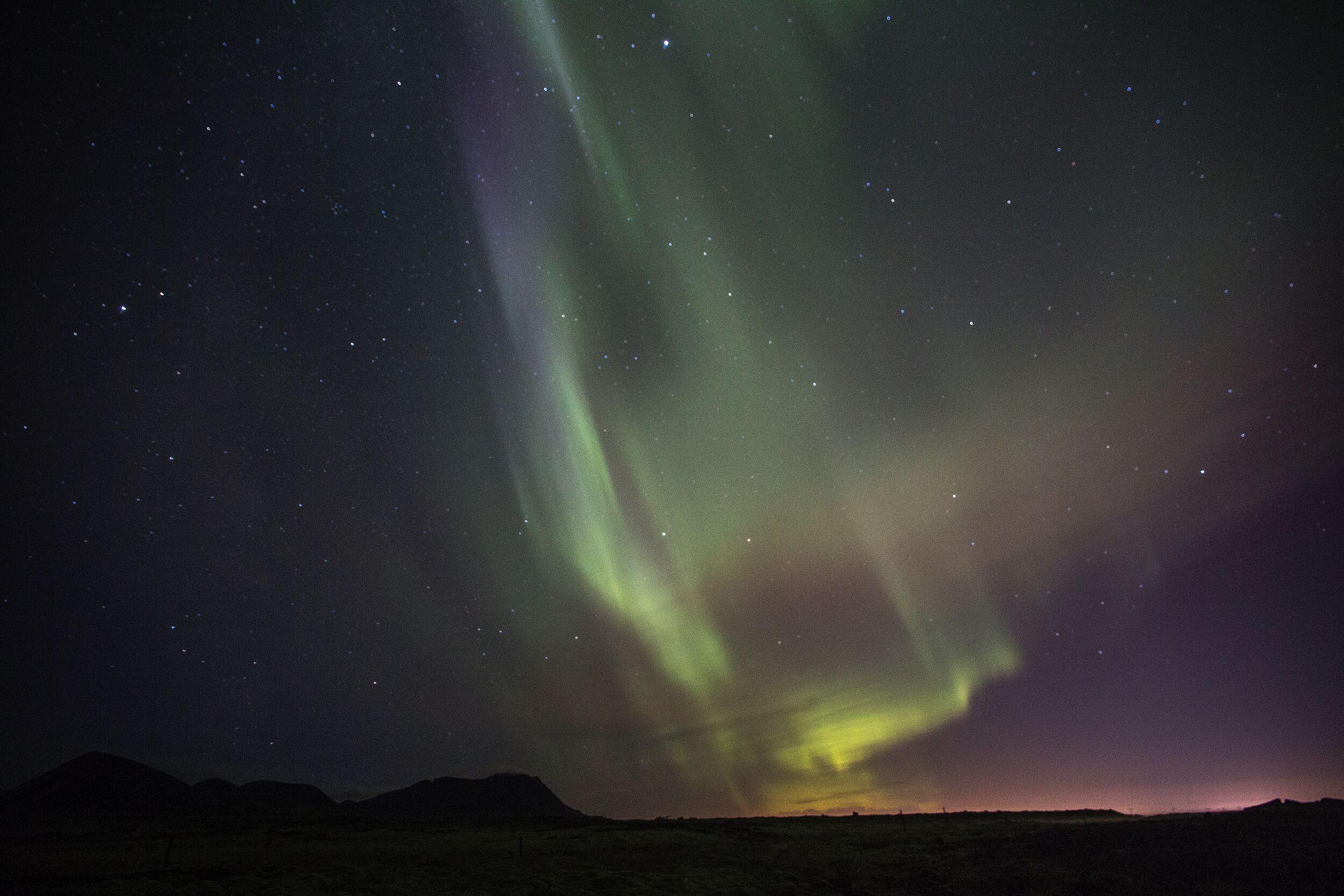
The Golden Circle & Northern Lights - Combo Deal
Want to see the sites of the Golden Circle and hunt for the northern lights but have a limited amount of time? Consider this express Golden Circle/Northern Lights tour! Experience the landmarks of the classic Golden Circle in South Iceland on this unforgettable day tour. The Golden Circle encompasses the must-see sights of Thingvellir National Park, the golden Gullfoss waterfall, and the bubbling geothermal region of Geysir. After your return to Reykjavík, a guide will lead you on a search for the elusive northern lights!
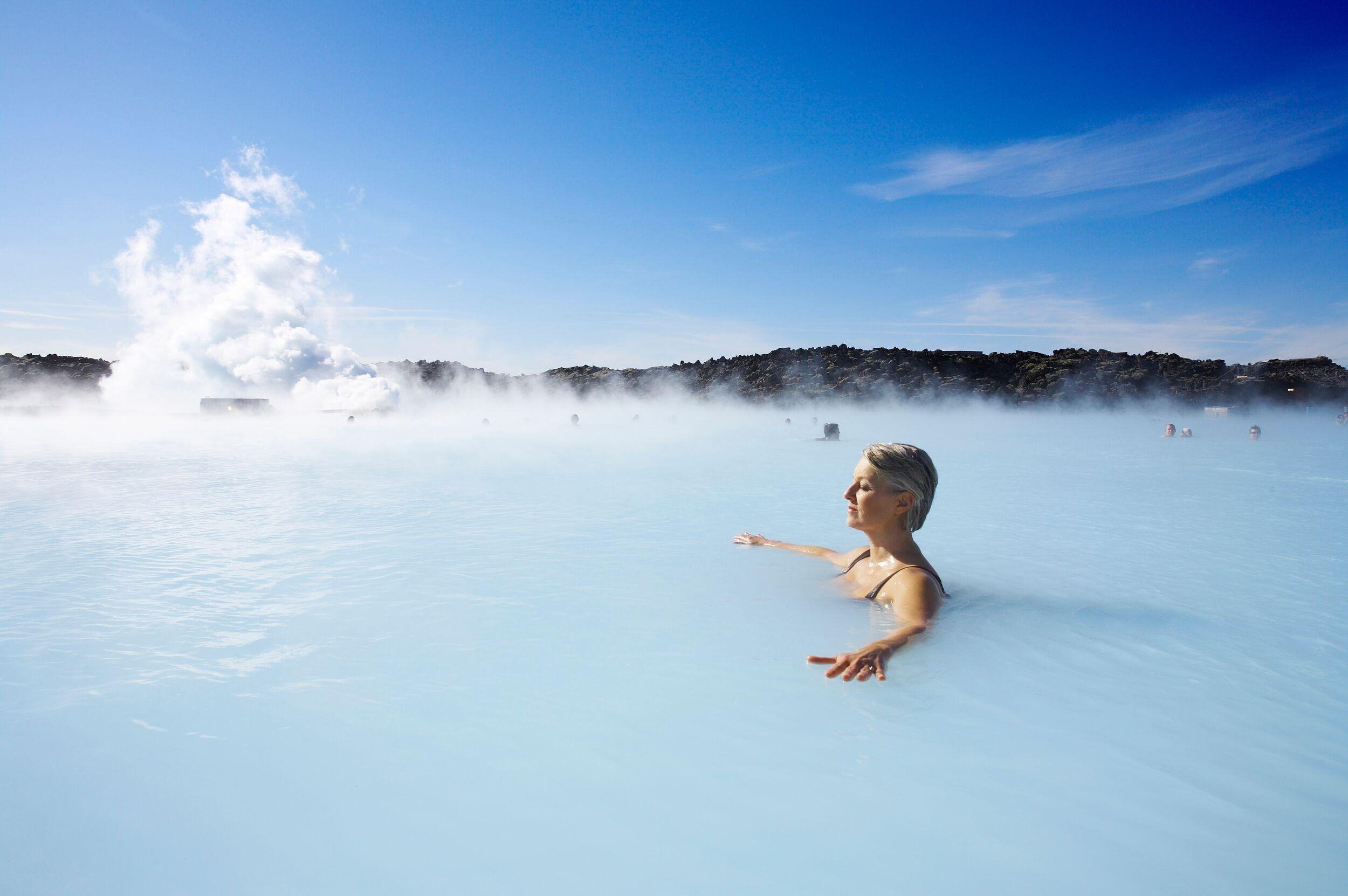
- Best seller
- Popular
Blue Lagoon & Northern Lights
Enjoy a perfect winter day in Iceland! Experience the best of Iceland with this package of two of the island’s most popular tours in one day! Soak in the milky blue healing water of the Blue Lagoon, which is one of Iceland's most famous tourist attractions and is considered by many to be a once-in-a-lifetime experience and an unmissable part of a visit to Iceland. After your return to Reykjavík, a guide will lead you on a search for the elusive northern lights! Watching the lights dance and flicker in the sky, changing shape and colour, is incredible. Prepare to be dazzled!
Questions and Answers about Northern Lights in Iceland
Almost any camera phone these days is powerful enough to take decent pictures of the Northern Lights. In fact, many phone cameras are actually better than proper cameras!
To take a good photo, turn your exposure to the maximum, turn off the flash, and use night mode. Apps such as Nightcap, Cortex Camera, or the Northern Lights Photo Taker can help too.
The rarest colours of the Northern Lights are blue and red. Blue auroras are produced by nitrogen molecules at lower altitudes and are less common. Red auroras, occurring at the highest altitudes and caused by high-altitude oxygen, are also relatively rare. Both these colours require specific atmospheric conditions to be visible, making them a less frequent but spectacular sight in auroral displays.
The Northern Lights can be seen from Reykjavík, yes. And it’s a magical experience to see them by chance when you’re just enjoying your evening.
However, the city is not the best place to see the Northern Lights. That’s because light pollution can prevent them from appearing with their full strength. Instead, you want somewhere dark to enjoy them at their best.
The Northern Lights are special for a couple of key reasons:
1. Unique Natural Phenomenon: They represent a spectacular natural light display in the Earth's sky, primarily seen in high-latitude regions around the Arctic and Antarctic. This phenomenon results from the interaction between the Earth's magnetic field and charged particles from the sun, making it a unique celestial event.
2. Cultural and Mythological Significance: Throughout history, the Northern Lights have held significant cultural and mythological importance in various societies. They have inspired numerous folklore tales and art and have been a subject of awe and wonder. Their ethereal beauty and the magical experience they provide add to their special status in human perception and experience.
It’s possible to see the Northern Lights in Iceland throughout the winter.
For the Northern Lights to be visible, you need two things: solar activity and a clear, dark sky. The darker the better—that’s why winters in very northern countries like Iceland are the best time to see them.
The darkest months of the year are November, December, and January. However, you can see Northern Lights from the middle of August through to April and studies show that the closer you are to the equinoxes, the higher the likelihood of seeing the Northern Lights. Based on that you'd want to place your bet on September/October and March/April.
The scientific processes that cause the Northern Lights occur very often, if not pretty much all the time—throughout the night, day, winter and summer. However, often you can’t see them because of the cloud, the midnight sun, or because you’re not looking.
While every night might be an exaggeration, the Northern Lights are much more common than you might think!
Auroras can last from a few minutes to several hours, depending on the intensity of the geomagnetic storm causing them.
To maximize your chances of seeing the Northern Lights, it's advisable to stay for at least a week. This duration allows for variability in weather conditions and solar activity, which are crucial factors in the visibility of the auroras. Since the Northern Lights are a natural phenomenon and their appearance can be unpredictable, a longer stay increases the likelihood of witnessing this spectacular display, especially considering potential cloudy nights or periods of low solar activity.
Facing north often increases your chances of seeing the Northern Lights, especially in lower-latitude areas. In Iceland, however, the lights are most often right above our heads or stretching across the entire sky.
There’s no way of guaranteeing that you’ll see the Northern Lights. It’s a natural phenomenon that’s affected by the weather, after all. But with Northern Lights tours, you do have a pretty good chance.
In Iceland, December is the month when the days are shortest and nights are darkest which typically makes it a favourite month for Northern Lights-hunting. However, studies show that the closer to the equinoxes you are, all the more likely you are to see northern lights in the northern hemisphere. So, some would prefer September and October or March and April over the darkest months, sacrificing a few hours of darkness for a higher likelihood of lights.
That said, you can have as much luck seeing the aurora borealis in any of the months of the winter. All you need is dark, clear skies.
Exciting studies and anecdotal evidence, ranging from Sami folklore to modern stargazers, suggest that the Northern Lights might produce sounds, a phenomenon as elusive as the lights themselves.
Historically, indigenous peoples and early Arctic explorers reported hearing sounds like crackling and whooshing during auroral displays, though these claims were met with scepticism since auroras occur at altitudes beyond the human ear's acoustic range.
Recent research in Finland, however, has recorded sounds such as claps and crackles coinciding with the auroras at lower altitudes within the human audible range. This emerging theory suggests that the electrical phenomena of auroras, involving charged particles and temperature variations, could generate these sounds akin to the noise produced by a spark.
While not all observers experience these sounds, and they're often heard under specific, quiet conditions, for some, the Northern Lights are not just a visual spectacle but a celestial concert, highlighting the dynamic nature of our planet.
Yes, you can see the Northern Lights in Reykjavik in some cases. However, when the lights are faint or low on the horizon, their visibility can be significantly reduced by the city lights and obstructed by buildings. For the best viewing experience, it's recommended to find spots away from the urban light pollution and with an unobstructed view of the sky.
It’s not at all rare to see the Northern Lights in Iceland! That’s why so many people come to the Land of Ice and Fire to enjoy the display.
In fact, you can see the aurora borealis almost every night if the skies are clear. You just need to know where to look!
The best way to increase your chances of seeing the Northern Lights is to join a tour. While you can sometimes see the phenomenon by yourself, when you’re led by an expert guide, they’ll be able to show you exactly where to look.
What’s more, if you don’t see the Northern Lights on your tour, we’ll give you a ticket to another tour on a day that suits you for free—to double your chances.
Three interesting facts about the Northern Lights are:
1. The Northern Lights, also known as Aurora Borealis, are caused by the interaction of solar wind - a stream of charged particles escaping the Sun - with Earth's magnetic field and atmosphere.
2. They can exhibit a variety of colours, with green being the most common. These colours result from different gases in the atmosphere getting excited by the solar particles; oxygen emits green and red hues, while nitrogen gives off blue and purple.
3. Although best known for appearing in polar regions, during periods of strong solar activity, the Northern Lights can be seen at lower latitudes, far from the polar areas. This makes them a spectacular and somewhat unpredictable natural light show.
To see the Northern Lights at their best, it’s recommended that you find a place where light pollution is lowest. That’s why the best Northern Lights tours will leave cities such as Reykjavík—because you can see the aurora better where it’s darkest.
That said, you can see the Northern Lights from the city. And as weather conditions and cloud cover change every night, the best place to see the Northern Lights changes too.
Seeing the Northern Lights in Iceland is fairly likely during the winter months if weather conditions are favourable.
The price of Northern Lights tours in Iceland depend on what you want to get up to and how you want to travel.
The most affordable option is the classic tour from Reykjavík, which takes you by coach to a destination where the conditions are best that evening. But if you want to travel by small group, or on a private vehicle, you will pay more.
The same goes for tours that take you to different destinations, such as the Golden Circle or the Blue Lagoon.
Check out individual tour pages for up to date prices.
The Northern Lights do not occur every night; their visibility depends on solar activity and atmospheric conditions.
The Northern Lights are not exclusively in the north; they are mirrored by the Southern Lights (Aurora Australis) in the southern hemisphere, both occurring near the Earth's magnetic poles.
When on a Northern Lights tour, plan to wear clothes that will best keep you warm. You’re going to be outside at night in the Icelandic winter, and to enjoy the experience to the fullest you won’t want to get cold.
The best idea is to wear lots of thin layers, plus a winter jacket and a windproof outer shell. And don’t forget to keep your feet warm! Icelandic woollen socks, for example, can be a good idea.
The best parts of Iceland for Northern Lights are outside urban areas, with the eastern northern and western regions often recommended for clearer skies.
Related Articles
See all articlesRecommended tours

The Golden Circle & Northern Lights - Combo Deal
Want to see the sites of the Golden Circle and hunt for the northern lights but have a limited amount of time? Consider this express Golden Circle/Northern Lights tour! Experience the landmarks of the classic Golden Circle in South Iceland on this unforgettable day tour. The Golden Circle encompasses the must-see sights of Thingvellir National Park, the golden Gullfoss waterfall, and the bubbling geothermal region of Geysir. After your return to Reykjavík, a guide will lead you on a search for the elusive northern lights!

Northern Lights Tour
See the majestic Northern Lights dancing across the sky. If the skies are shy, try again free of charge as many times as you need until you see them! Learn about the phenomenon by visiting the Aurora Centre - Northern Lights Exhibition in Reykjavík; admission is included in this tour!

- Best seller
- Popular
Blue Lagoon & Northern Lights
Enjoy a perfect winter day in Iceland! Experience the best of Iceland with this package of two of the island’s most popular tours in one day! Soak in the milky blue healing water of the Blue Lagoon, which is one of Iceland's most famous tourist attractions and is considered by many to be a once-in-a-lifetime experience and an unmissable part of a visit to Iceland. After your return to Reykjavík, a guide will lead you on a search for the elusive northern lights! Watching the lights dance and flicker in the sky, changing shape and colour, is incredible. Prepare to be dazzled!
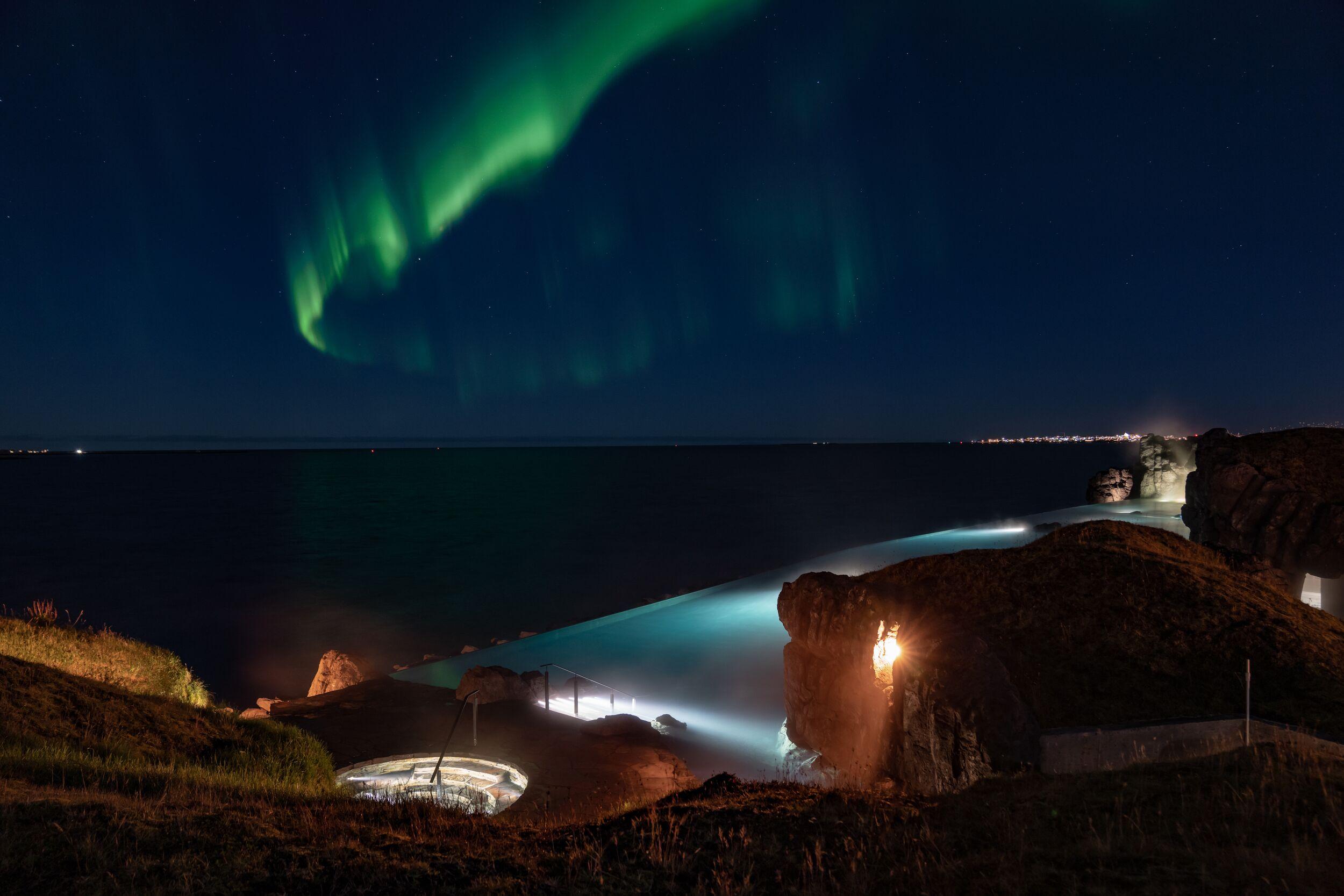
The Sky Lagoon & Northern Lights
Enjoy a relaxing soak in the Sky Lagoon before your adventurous Northern Lights hunt.

Northern Lights - Small Group Tour
Catch the stunning Northern Lights in the sky, and if they're shy, rebook for free until they show. Included admission to the Aurora Centre's Northern Lights Exhibition on the tour date. The small group size ensures an intimate experience and personalized attention from your expert guide.
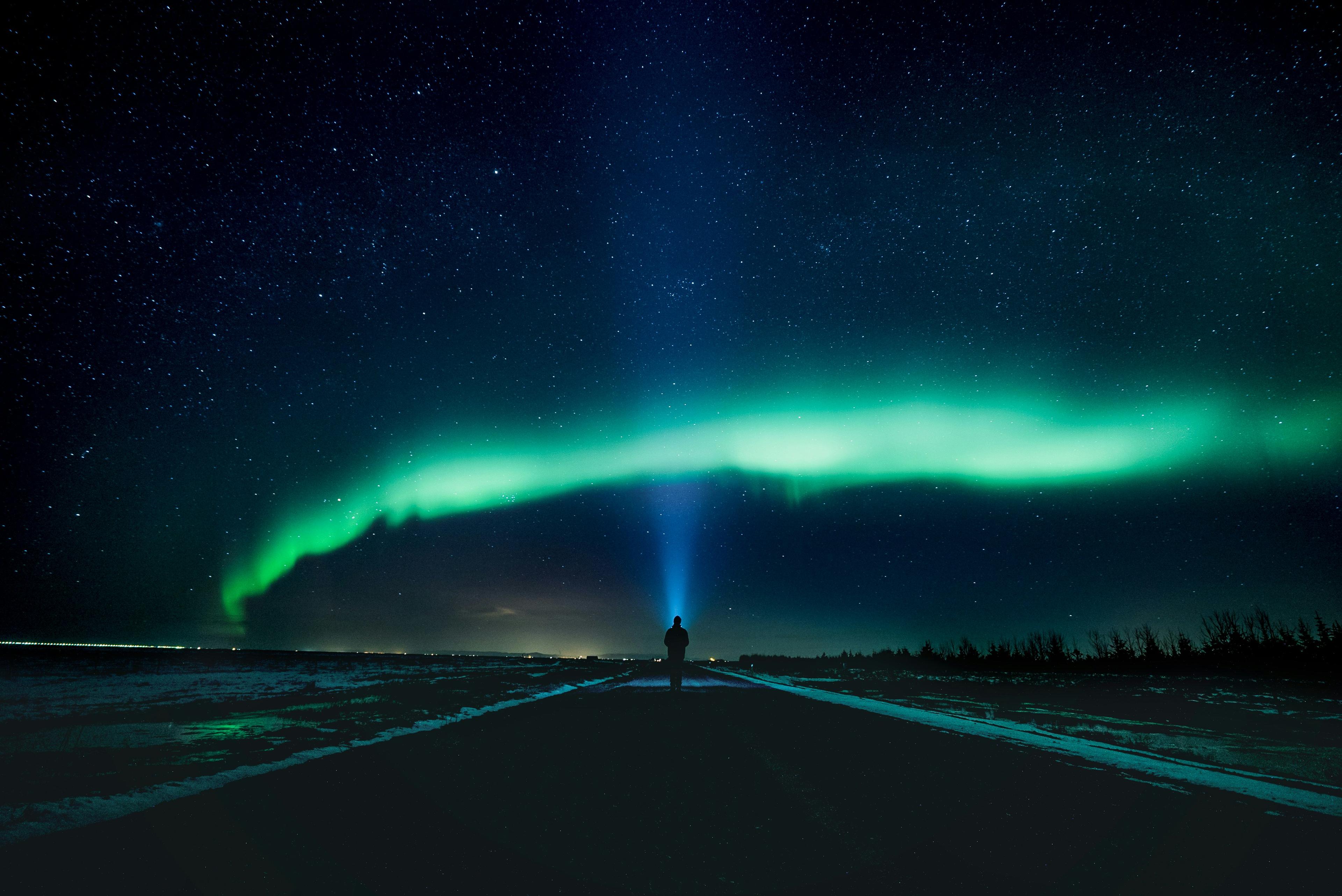
Northern Lights Explorer – Super Jeep Tour
Embark on an unforgettable Northern Lights adventure from Reykjavík in a specially modified Super jeep designed to explore off-the-beaten-path locations. Escape the crowds and experience the breathtaking Aurora in the remote Icelandic wilderness.


